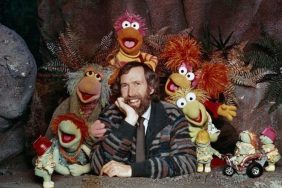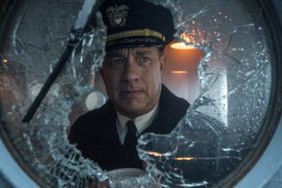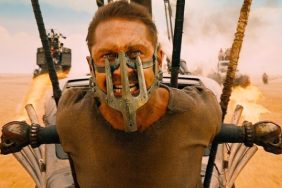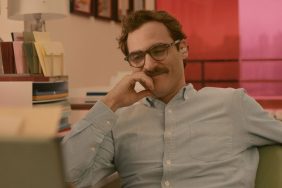On July 11th, Richard Linklater’s film Boyhood will open in theaters. This film is uniquely constructed: Linklater began shooting the film in 2002, and followed the same actors for a 12-year period, watching them all grow up together. The ambition of the project can perhaps only be matched by Michael Apted’s Up documentaries, which met a group of 7-year-olds in 1964, and has visited them every seven years since. The last film in the series was 56 Up.
Boyhood is a bold experimental film that is trying something new with the cinematic form. Experimental films are perhaps the lifeblood of all cinema. Everything has to be new at some point, and we can’t discover what is new within a certain medium without a good deal of tinkering. Indeed, if one were to go back to the early days of cinema (say, the first three decades), one will find heaping helpings of surrealist and avant-garde short films made by filmmakers who, well, didn’t quite know what to do with the form yet, and were trying everything they could. Experimental films reveal the depth, the grandness, and the versatility of film. Movies are not just one thing. They can be anything. And why not experiment? Why not try new things?
So throw that three-act structure out the window. Stomp on your preconceived notions of film as a “storytelling medium.” Abandon all hope, Mr. Protagonist, Ms. Conflict, Sir Drama, Lady Closure and all you other Screenwriting 101 mascots. Below is a list of some of the most striking, daring, and extraordinary experimental films ever released.
(Note: This list will only include feature-length films, as the list of experimental and avant-garde short films is far too long to delve into here.)
Witney Seibold is the head film critic for Nerdist, and a contributor on the CraveOnline Film Channel, and co-host of The B-Movies Podcast. You can read his weekly Trolling articles here on Crave, and follow him on “Twitter” at @WitneySeibold, where he is slowly losing his mind.
18 Extraordinarily Experimental Films
-
Tarnation (dir. Jonathan Couette, 2003)

Tarnation is a collage of footage assembled by Jonathan Couette over the course of 19 years of his life. He would frequently film himself and his schizophrenic mother. We get to see Couette growing up, the trials with his mom's mental illness, and the depth of a life condensed into an 88-minute film made for only the cost of a camera and the videotapes. It's one of the best films of the 2000s. -
Begotten (dir. E. Elias Merhige, 1990)

Shot in a high-grain chiaroscuro, and featuring no dialogue and almost no music, Begotten is a bizarre, earthy soundscape that seems to detail a creation myth of some kind. It is visceral and bloody and theatrical. Merhige toyed with the mainstream with films like Shadow of the Vampire and Suspect Zero, but seems far more content exploring dreams and mysticism within his artist's enclave, where he can make films like Begotten. -
Last Year at Marienbad (dir. Alain Resnais, 1961)

Last Year at Marienbad is the kind of film art-loving college students fall in love with and never forget. Very French, Marienbad attempts to reconstruct the way memory works. We see a woman telling a tale about how she met a lover at a large palatial mansion, but the story repeats often, changes often, is told out of order, and never adds up to a full tale. We forget, misremember, and embellish certain details. This is a film told from inside a human memory. -
Man with a Movie Camera (dir. Dziga Vertov, 1929)

Recently declared one of the best movies of all time, Man with a Movie Camera comes from the height of film experimentation. It's essentially a documentary film about the Soviet Union, but told through ecstatic bits of casual observation, largely free of commentary or narration. If a camera was designed to observe, then Man with a Movie Camera is cinema at its most pure. -
Waking Life (dir. Richard Linklater, 2001)

Linklater has always liked toying with cinema, and in 2001, he made what could be considered the first experimental animated feature film. He interviewed dozens of people on widespread topics like dreams, existentialism, philosophy, and the mind. He also filmed musicians, storytellers, and conspiracy theorists. Then, using nothing but laptop computers, animated over the interviews using the rotoscoping process. The result is a grand and awesome shimmering dream of deep thinking. -
Enter the Void (dir. Gaspar Noé, 2009)

Gaspar Noé explores the afterlife in Enter the Void. The film is told entirely in POV, seen from literally inside the eyeballs of the protagonist (when he blinks, the camera goes black for a split second). When the protagonist is shot to death in a bad drug deal, we see his POV float above the heads of the people he knew, looking down on them from above. As the film progresses, what he sees begins to dissipate, becoming a flickering mad world of dreams. -
Russian Ark (dir. Aleksandr Sokurov, 2002)

Eager to tell the whole of Russian history, Sokurov took a new kind of digital camera into the Hermitage in St. Petersberg, and wandered through the halls. He observed history unfolding, dancers dancing, entire orchestras playing, and all of Russian history spill out into the front path of the mansion. And he did it all in one single 99-minute shot. Russian Ark is one of the only films to be made with no editing at all. -
Heart of Glass (dir. Werner Herzog, 1976)

Werner Herzog has always loved dwelling around the fringes. He once famously said that cinema is starved for new images. Heart of Glass is about a small village which exports glass, and how the village elder refuses to share his secrets on how to make a special type of glass. Herzog, to achieve a distanced dream state, elected to hypnotize all his actors before shooting. They all seem distracted and far away. It's a somnambulant experience. -
The Blood of a Poet (dir. Jean Cocteau, 1932)

Jean Cocteau found out how to manipulate cameras early on, using superimpositions and clever reverse effects to create some exquisitely surreal imagery. An artist is confronted by his own sculpture, and finds a mouth on the palm of his hand. From there, he takes a trip to the Hotel of Dramatic Lunacies. It's a comment on the way the mind creates... I think. Whatever it's about, it's exhilarating. -
The Tree of Life (dir. Terrence Malick, 2011)

Terrence Malick is interested in the big questions of life and existence, and he seems to have made his masterwork in 2011 with The Tree of Life. He depicts a usual family existence in Texas in the 1950s, and all the dramas therein, but told kind of out-of-order. Also, he intercuts these scenes with shots of the universe forming, of dinosaurs, of the whole of creation coming into being. Human life, he says, is tiny and insignificant, but also the biggest possible thing. -
Timecode (dir. Mike Figgis, 2000)

Timecode follows four main characters, each featured in a separate segment of the movie screen. Four movies essentially play simultaneously. When this film was released theatrically, Figgis appeared in theaters to mix the sound live, selecting which of the four movies you would hear at any given time. -
Blue (dir. Derek Jarman, 1993)

An interview film about AIDS, Blue is a sound collage of music and anecdotes all about the effect the disease has had on various people. The visual experiment? The screen is nothing but a soothing shade of blue, and does not change throughout the film's 79-minute running time. After a while, your eye may start to create illusions to fill that blank blueness. -
Schizopolis (dir. Steven Soderbergh, 1996)

A dream of a slapstick comedy, Schizopolis was Steven Soderbergh essentially just messing around. Schizopolis is a series of vignettes, some of which feature regular English, some of which feature random words, some of which feature subtext spoken aloud, all to hilarious effect. What does it all mean? Soderbergh seems to be saying that most of life is so absurd, you can't help but giggle. -
That Obscure Object of Desire (dir. Luis Buñuel, 1977)

No list of experimental films would be complete without a film by Luis Buñuel. That Obscure Object of Desire, amongst all the famed filmmaker's surrealist experiments, features nothing but a subtle casting trick. An old Spanish aristocrat (Fernando Rey) is in love with a younger woman. Randomly throughout the film, though, the younger woman will change between two actresses, Carole Bouquet and Ángela Molina. -
Palindromes (dir. Todd Solondz, 2004)

And speaking of casting gimmicks, Todd Solondz made his most ambitious film in 2004 with Palindromes, a film about a wounded 13-year-old girl named Aviva who is trying to escape the oppressive yoke of her suburban prison. Aviva, however, is played by over a dozen actors throughout the film, all of various ages, races, and genders. Aviva is all people. -
My Winnipeg (dir. Guy Maddin, 2007)

Like a combination of Jean Cocteau's silent film experimentation and Alain Resnais' memory plays, Guy Maddin is Canada's great auteur. In My Winnipeg, he tells some true stories and some false stories about what it was like to grow up in the titular town, all through scratchy black-and-white footage, on-screen intertitles, and narrated silent portions. It's like a dream of a silent movie, mixed with Maddin's own memories.
-
Koyaanisqatsi (dir. Godfrey Reggio, 1982)

Koyaanisqatsi is a film about the environment that uses gorgeous photography of seemingly random images to explore how life on this planet is perhaps out of balance. Koyaanisqatsi, featuring a contemplative score by experimental musician Phillip Glass, is not really a story or an exploration, but a meditation on this world we live in. Other films followed it in a series. -
Empire (dir. Andy Warhol, 1964)

One of the world's most infamous experimental films, Andy Warhol's Empire is a single, static shot of the Empire State Building that lasts for 485 minutes. One shot, no edits, no narration, no music, no camera movement, for over eight hours. When asked why he made the film, Warhol responded that the wanted to see time go by. He succeeded.









